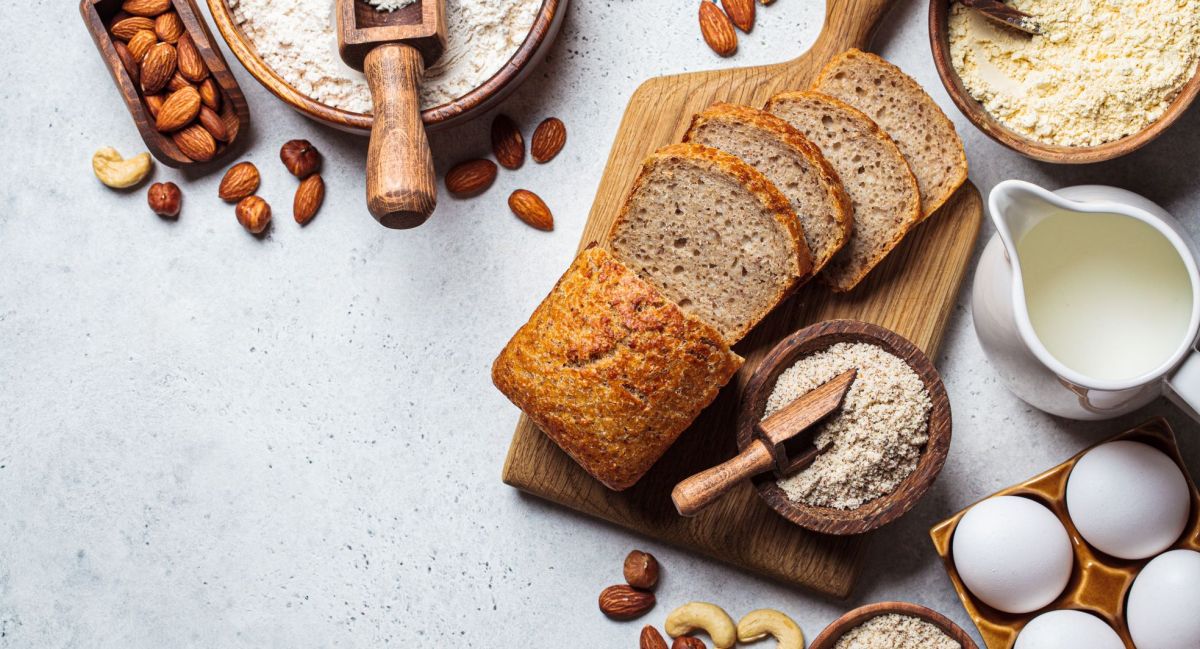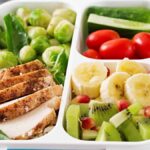Embark on a culinary journey that reimagines everyday meals through the lens of the Banting diet. Imagine vibrant breakfasts bursting with flavor and healthy fats, replacing sugary cereals and pastries with satisfying alternatives. Picture quick and easy lunches, meticulously crafted to fuel your busy days without sacrificing taste or nutritional value. Envision dinners that are both elegant and effortlessly Banting-friendly, transforming familiar dishes into low-carb delights. This guide unveils a treasure trove of creative recipe swaps, transforming the Banting lifestyle from a restrictive diet into a vibrant and enjoyable culinary adventure.
We’ll explore innovative breakfast options, providing detailed instructions and nutritional comparisons to traditional high-carb counterparts. Quick and easy lunch recipes perfect for busy weekdays will be presented alongside meal-prepping tips. Delicious and satisfying dinner alternatives will be unveiled, tackling the challenges of adapting traditional recipes to the Banting principles. Finally, a collection of creative Banting snacks and desserts, along with a comprehensive meal-planning guide, will equip you with the tools to seamlessly integrate this lifestyle into your daily routine.
Creative Banting Breakfast Swaps

Embracing the Banting lifestyle doesn’t mean sacrificing delicious and satisfying breakfasts. By focusing on healthy fats, protein, and low-carb vegetables, you can create vibrant and energy-boosting morning meals that support your dietary goals. These recipes offer creative alternatives to traditional high-carb breakfasts, providing sustained energy and nutritional benefits.
Banting Breakfast Recipe Alternatives
This section details three Banting breakfast recipes designed to replace traditional high-carb options, offering detailed instructions and nutritional comparisons.
Coconut Flour Pancakes with Berries and Cream
These fluffy pancakes are a delightful replacement for traditional wheat-based pancakes. The coconut flour provides a subtly sweet flavor and a satisfying texture. A dollop of whipped cream adds richness and complements the sweetness of the berries.
- Whisk together 1 cup coconut flour, 1 teaspoon baking powder, a pinch of salt, and a sweetener of choice (e.g., stevia or erythritol) in a bowl.
- In a separate bowl, whisk together 2 large eggs, 1 cup unsweetened almond milk, and 1 tablespoon melted coconut oil.
- Gradually add the wet ingredients to the dry ingredients, mixing until just combined. Do not overmix.
- Heat a lightly oiled non-stick skillet over medium heat.
- Pour 1/4 cup of batter onto the hot skillet for each pancake.
- Cook for 2-3 minutes per side, or until golden brown and cooked through.
- Serve immediately with a topping of fresh berries and a dollop of whipped cream.
Savory Avocado and Egg Scramble
This protein-packed scramble offers a savory alternative to sugary cereals or toast. The creamy avocado adds healthy fats and a rich texture, while the eggs provide essential protein.
- Halve and pit a ripe avocado. Dice one half.
- Sauté the diced avocado in 1 tablespoon of butter or coconut oil until slightly softened.
- Whisk 2 eggs with a pinch of salt and pepper.
- Pour the eggs into the skillet with the avocado.
- Cook, stirring occasionally, until the eggs are set but still slightly moist.
- Serve immediately. Optional additions include chopped spinach, mushrooms, or cheese.
Chia Seed Pudding with Nuts and Seeds
This creamy and nutrient-rich pudding is a fantastic alternative to sugary yogurts or breakfast cereals. Chia seeds are packed with fiber and omega-3 fatty acids, while the nuts and seeds add healthy fats and protein.
- Combine 1/4 cup chia seeds, 1 cup unsweetened almond milk, and a sweetener of choice (e.g., stevia or erythritol) in a jar or bowl.
- Stir well to combine.
- Cover and refrigerate for at least 4 hours, or preferably overnight, allowing the chia seeds to absorb the liquid and form a pudding-like consistency.
- Before serving, top with chopped nuts (e.g., almonds, walnuts), seeds (e.g., pumpkin, sunflower), and a sprinkle of cinnamon.
Nutritional Comparison of Banting Breakfasts vs. Traditional Counterparts
This table visually compares the macronutrient content (carbohydrates, protein, and fat) of the Banting breakfast recipes with their traditional counterparts. Values are approximate and can vary based on specific ingredients and portion sizes.
| Breakfast | Carbohydrates (g) | Protein (g) | Fat (g) |
|---|---|---|---|
| Coconut Flour Pancakes (Banting) | 10-15 | 10-12 | 20-25 |
| Traditional Pancakes | 40-50 | 5-7 | 10-15 |
| Avocado and Egg Scramble (Banting) | 5-7 | 15-18 | 25-30 |
| Breakfast Cereal with Milk | 40-60 | 5-10 | 5-10 |
| Chia Seed Pudding (Banting) | 10-15 | 8-10 | 15-20 |
| Yogurt with Granola | 30-40 | 8-12 | 10-15 |
Step-by-Step Guide to Banting Meal Planning
Planning a week of Banting meals can feel overwhelming at first, but with a structured approach, it becomes manageable and enjoyable. This guide provides a clear, step-by-step process to create delicious and effective Banting meal plans, ensuring you reap the benefits of this low-carbohydrate, high-fat diet. Remember, consistency is key to success.
Banting Meal Planning: A Weekly Overview
Successful Banting requires careful planning. This involves identifying your daily caloric needs, selecting appropriate protein and fat sources, and scheduling meals to maintain energy levels and satiety throughout the day. A well-structured plan minimizes the temptation to stray from the diet and promotes long-term adherence.
Step 1: Determine Your Caloric Needs and Macronutrient Ratios
Before diving into recipes, calculate your daily caloric needs based on your age, gender, activity level, and weight goals. Many online calculators can assist with this. Once you have your total calories, determine your macronutrient ratios. A typical Banting ratio might be 70% fat, 25% protein, and 5% carbohydrates. This translates to a specific number of grams for each macronutrient based on your total daily calorie intake. For example, a 2000-calorie diet might allocate roughly 140g of fat, 125g of protein, and 10g of carbohydrates. Remember that this is a general guideline, and individual needs may vary.
Step 2: Selecting Protein Sources
Prioritize lean protein sources. Excellent choices include: chicken breast (imagine its succulent texture and subtle flavor), salmon (picture its rich orange flesh and delicate, flaky consistency), grass-fed beef (visualize its deep red color and robust taste), eggs (think of their versatility and ability to be prepared in countless ways), and various types of seafood. These provide essential amino acids and contribute to satiety.
Step 3: Choosing Healthy Fats
Incorporate a variety of healthy fats into your meals. These are crucial for satiety and overall health. Examples include: avocado (imagine its creamy texture and slightly peppery taste), olive oil (visualize its vibrant green color and fruity aroma), coconut oil (picture its solid white form melting into a clear liquid), nuts (think of their satisfying crunch and rich flavor), and seeds (consider their versatility and ability to add texture to dishes). Avoid processed fats and unhealthy oils.
Step 4: Sample Banting Meal Plan (2000 Calories)
This is a sample plan; adjust portion sizes to match your individual caloric needs and preferences.
| Meal | Description | Approximate Macronutrient Breakdown (g) |
|---|---|---|
| Breakfast | Scrambled eggs (3) with spinach and avocado (½) | Fat: 25, Protein: 20, Carb: 5 |
| Lunch | Grilled chicken salad with olive oil and vinegar dressing, mixed greens, and almonds | Fat: 40, Protein: 35, Carb: 2 |
| Dinner | Salmon baked with asparagus and a drizzle of olive oil | Fat: 50, Protein: 40, Carb: 3 |
| Snacks | Handful of almonds and a small avocado | Fat: 25, Protein: 10, Carb: 0 |
Step 5: Common Banting Mistakes and Solutions
One common mistake is insufficient fat intake. Many beginners fear fat, but it’s essential for satiety and hormone production. Increase healthy fat consumption gradually to reach your target ratio. Another common error is neglecting the importance of variety. A monotonous diet can lead to nutrient deficiencies and decreased adherence. Plan your meals to include a wide range of protein and fat sources. Finally, some individuals struggle with the initial transition phase. This often involves symptoms like headaches or fatigue, which typically subside as the body adapts. Ensure adequate hydration and electrolyte intake during this period.
The Importance of Variety in Healthy Fats and Protein Sources
A diverse range of healthy fats and protein sources is essential for optimal health and adherence to the Banting diet. Different fats offer varying nutritional profiles and benefits. Similarly, diverse protein sources ensure you obtain a complete spectrum of amino acids. This variety not only enhances nutritional value but also prevents dietary boredom and enhances enjoyment. The inclusion of a wide array of nutrient-rich foods supports overall well-being and makes the Banting lifestyle sustainable.
By mastering these creative Banting recipe swaps, you’ll unlock a world of flavor and culinary possibilities while adhering to your dietary goals. From the satisfying crunch of a Banting-friendly granola to the rich indulgence of a guilt-free dessert, each recipe is designed to delight your taste buds and nourish your body. This journey extends beyond mere recipes; it’s about embracing a lifestyle change, one delicious and satisfying meal at a time. The detailed instructions, nutritional information, and meal-planning guidance provided will empower you to confidently navigate the Banting diet, transforming your relationship with food and achieving your health and wellness aspirations.
FAQ Corner
Can I use artificial sweeteners in Banting recipes?
While some artificial sweeteners are acceptable within the Banting framework, it’s best to prioritize natural alternatives like stevia or erythritol, keeping in mind individual sensitivities and moderation.
How do I manage Banting cravings?
Staying hydrated, incorporating plenty of healthy fats and protein, and focusing on whole, unprocessed foods can help manage cravings. Planning ahead and having healthy snacks readily available also helps.
Is it okay to have cheat days on a Banting diet?
Occasional indulgences are possible, but it’s crucial to maintain mindful consumption and return to the Banting principles quickly. Overindulgence can hinder progress.
What are the long-term benefits of a Banting diet?
Potential long-term benefits include weight management, improved blood sugar control, and enhanced energy levels. However, individual results vary, and it’s important to consult a healthcare professional.


